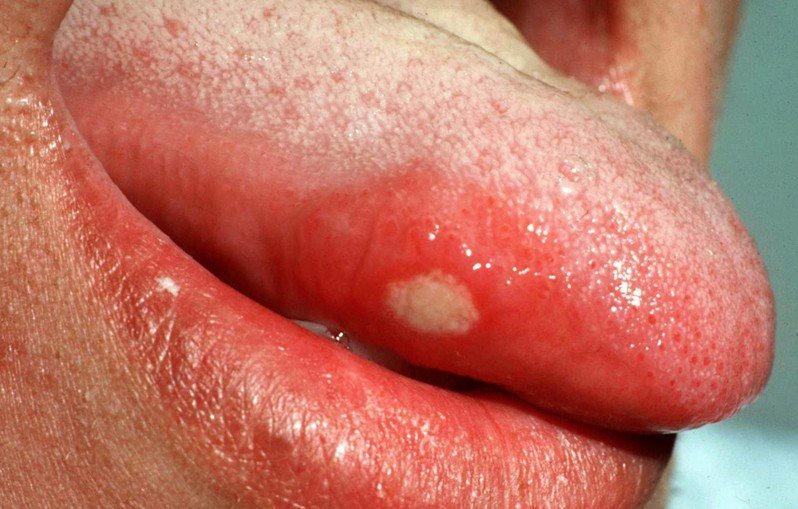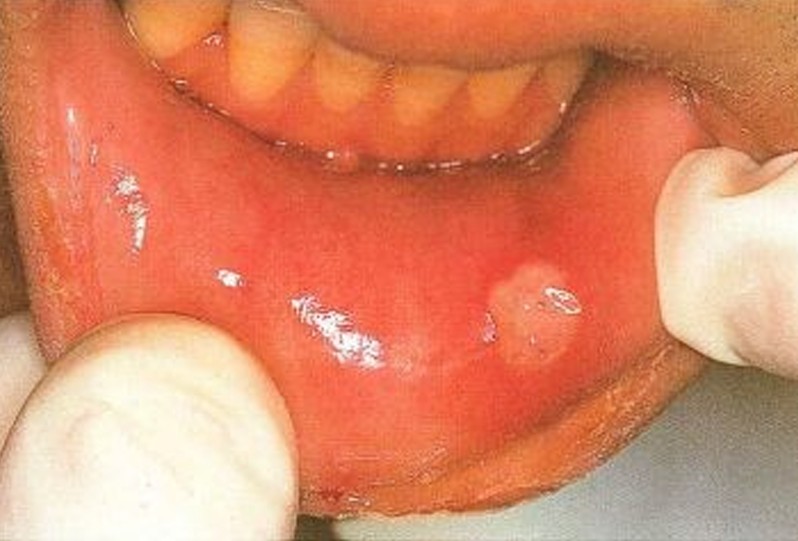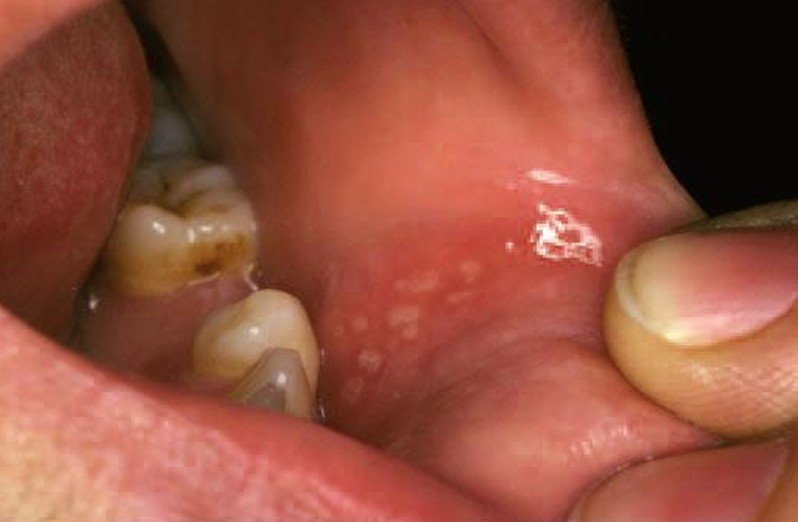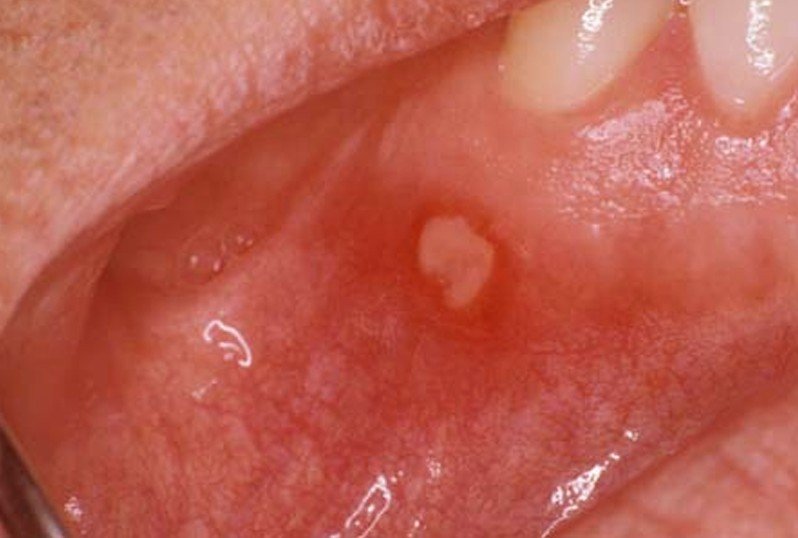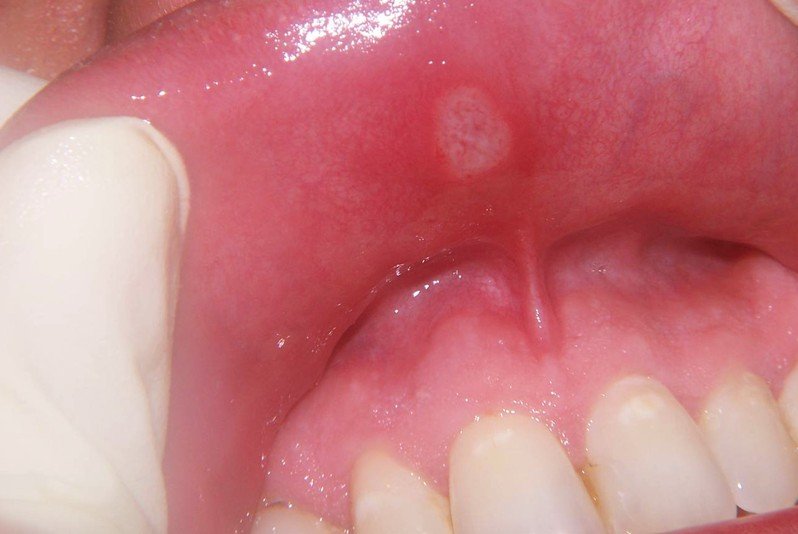Aphthous Ulcer
The aphthous ulcer is a common condition that is also known as recurrent aphthous stomatitis in the medical world. The condition is pretty common in children and teenagers, this being the period of debut as well. The ulcers appear inside the mouth, causing a lot of discomfort and sometimes pain. Patients diagnosed with aphthous ulcer often present a family history and the condition usually goes away on its own somewhere around young adulthood. However, if the mouth ulcers persist and there is no spontaneous disappearance, there may be a sign of a systemic illness. Common conditions associated with the aphthous ulcer include the Behçet syndrome, diseases of the gastrointestinal tract, autoinflammatory conditions and HIV/AIDS.
The lesions that appear inside the mouth are benign and they appear in healthy individuals. At the moment, there is no cure for the disease and the treatments that are available are aimed at improving the symptoms. Pain is one of the main objective treatments but medical specialists are also trying to reduce the amount of time that is necessary for healing and also to reduce the number of episodes. Identifying the triggering factors that might lead to the appearance of the aphthous ulcer is also a recommended course to follow.
Aphthous Ulcer Symptoms
These are the most common symptoms of the aphthous ulcer:
- Lesions inside the mouth, affecting the mucous membranes
- These lesions are also known as aphthae, hence the name of the condition
- Lesions tend to come and go, being triggered by a set of factors (the triggering factors will be discussed under causes)
- From one episode to the other, the lesions heal completely, without leaving any sign
- A common lesion can last up to ten days
- On average, a person experiences from three to six episodes per year
- The hard palate and the dorsum of the tongue are not affected by the lesions, in the majority of the cases
- The patient can experience discomfort and even pain
- Usual activities, such as drinking and eating can be impaired. Speaking can be affected as well, in more severe cases.
- Weight loss appears in severe cases, when the patient does not eat because of the prolonged and extensive lesions inside the mouth
- No systemic symptoms accompany the disease
- Before the appearance of the actual lesions, the patient might experience a burning or stinging sensation
- The pain experienced in the region can be aggravated by food or liquid intake, especially if they are acid
- The pain is at its highest level immediately after the ulcer has formed
- As the lesion heals, the pain subsides
- Chronic cases have new lesions appear before the older ones heal, the chewing process is constantly affected and the pain is constant as well. These are the cases where the weight loss occurs.
Causes of Aphthous Ulcer
The exact cause that leads to the appearance of the aphthous ulcer has yet to be identified. From the research made so far, specialists know that this condition is not caused by an infectious agent and it is not transmitted through sexual contact. The modifications that appear inside the mouth are believed to actually be a response of the immune system to a harmful stimulus. No association has been made so far with autoimmune diseases. However, it seems that the immune system plays an important role in the appearance of this condition. Associations with other systemic conditions have been made.
The persons who are diagnosed with aphthous ulcer usually have problems with immunity, their defensive protective barrier does not function properly and they have an increased sensitivity to developing such lesions. It also seems that there is a genetic predisposition to this condition, as a lot of the patients diagnosed with aphthous ulcer have a family history. Stress is believed to be a triggering factor, because a lot of the persons who are stressed tend to constantly bite their lip or cheek and thus they breakdown the protective barrier. Also, if the thickness of the mucosal barrier is decreased through, for example, local trauma, that increases the risk for the appearance of the ulcer.
Treatment for Aphthous Ulcer
These are the most common courses of symptomatic treatment and recommendations for aphthous ulcer:
Topical treatments
- Covering agents – these are recommended for the reduction of pain
- Orabase
- Triamcinolone
- Anti-inflammatory medication – reduces both pain and inflammation
- Benzydamine hydrochloride – in the form of mouthwash/spray
- Amlexanox (paste)
- Lidocaine (viscous)
- Hyaluronan (active agent – diclofenac)
- Antiseptics – reduces healing time and prevents secondary infections
- Doxycycline
- Tetracycline
- Triclosan
- Topical corticosteroids – reduce inflammation in the affected area (depending on the severity of the condition, administration can range from mild to medium potency)
- Hydrocortisone cream (mild)
- Dexamethasone (moderate)
- Oral corticosteroids – these are recommended only in severe cases, because of the potential side-effects
- Prednisolone
- Surgical excision in rare cases
Home remedies
These are the most common home remedies recommended for the aphthous ulcer:
- Mouth rinses – Mix warm water with: baking soda, goldenseal powder and elm powder
- Topical application of milk of magnesia (directly on the ulcer)
- Paste application – mix baking soda with a small quantity of water
- Try to chew ice chips in the area near the lesions. They will act as numbing agents, reducing the pain and discomfort.
- Use special toothpaste recommended for such medical problems and a soft toothbrush.
- Apply propolis tincture
- Use licorice extract to reduce the healing time for the lesions
- Alum powder topical application
- Probiotics to replenish useful bacteria inside the mouth
- Avoid eating spicy, acidic or irritating foods
- Avoid drinking acid beverages
- Saltwater solution with sodium bicarbonate
- Hydrogen peroxide solution
As you can see for yourself, the treatment for the symptoms of aphthous ulcer consists of both medication and home remedies. Be sure to try out everything that has been suggested in this article and see which one works better for your own situation. Make the necessary diet changes and you will definitely see an improvement whereas the actual lesions are concerned. These are necessary for preventive purposes as well.
Aphthous ulcer Pictures
Collection of photos, images and pictures of Aphthous ulcer…


